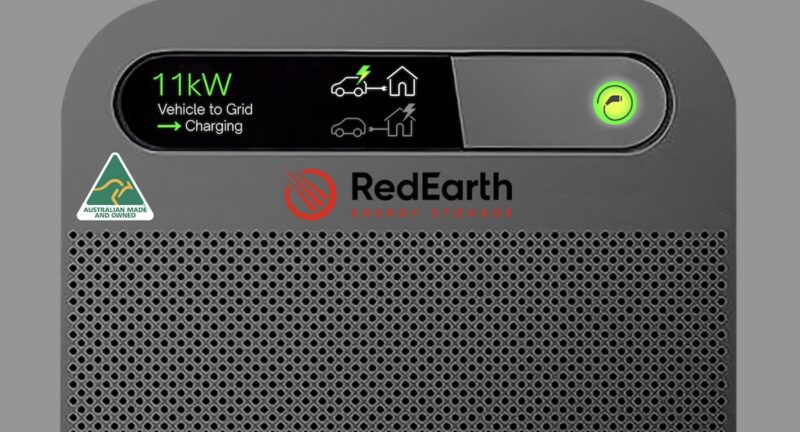Queensland based battery and energy management company RedEarth Energy Storage says pre-orders for its promised 11kW three-phase vehicle-to-grid electric vehicle charger will start in November, with a recommended retail price of $9,990 ex GST.
RedEarth announced in late 2024 a deal to produce the bi-directional EV chargers of German company Ambibox at its factory in Darra, Queensland, making it one of the first Australian companies out of the blocks on vehicle to grid (V2G) technology.
The announcement followed the news that new federal standards had been locked in to pave the way for V2G technology in Australia, turning EVs into batteries on wheels that offer huge potential benefits to consumers and the grid, alike.
Some EV makers will offer an AC solution for V2G with technology and inverters offered as hardware within the car, while others will rely on bidirectional chargers from 3rd parties, such as RedEarth and Ambibox, to deliver the technology.
“The V2G Charger will allow EV owners to use their vehicle’s mobile battery system to supplement their home energy storage system, providing access to additional energy reserves during grid outages,” says RedEarth, Marc Sheldon.
“For homeowners participating in the energy market, this feature will also allow EV batteries to interact with the wholesale market, charging when electricity prices are low or in negative territory, and discharging to generate revenue when prices are high.
“We’ve also delivered a clear pathway for installers who want to get on the V2G bandwagon with the V2G charger, helping them stay relevant and competitive in a rapidly evolving home energy market.”
But Sheldon says that while the technical and regulatory scaffolding for V2G EV charging in Australia is in place, a bunch of other complexities particular to the Australian market mean that bidirectional charging is still a bit of a work in progress.
“It’s a really complex product, right? And the complexities go way beyond what’s obvious to the consumer,” Sheldon told the Driven in an interview on Thursday.
“The complexity is high… which is why we’ve made the decision that when we bring it into market, we have a full expectation it’s going to be a high touch product.
“It’s one that it gets installed, it works, but there’s going to be edge cases where consumers go, Well, why does it do this? And we’ll have to support that.
“And there’s going to be fair bit of discovery going on as well,” Sheldon says. “How does it work with [home] batteries?… Our expectation is the residential customers that buy this will be early adopters. Early adopters, by all likelihood, will have home batteries – which means you’ve got two separate batteries in one household.
“What we’re trying to do by getting this product out to market is to actually …bring these issues to the forefront,” he adds.
“And we’ll have issues, we’ll have challenges, and for us it’s important to understand, how do we need to modify the product as we go forward? What is it we need to adjust?
“To degree, in Australia we’re, if you like, at the vanguard of this. We’ve got an open environment… our regulation allows the use of these systems to participate in the market …so everyone wants to use it that way. And now we need to solve that problem.”
RedEarth says that while orders open in November for the V2G Charger, customer deliveries are expected to commence in February 2026. RedEarth will be at the All-Energy Australia conference and exhibition next week in Melbourne.

Sophie is editor of One Step Off The Grid and deputy editor of its sister site, Renew Economy. Sophie has been writing about clean energy for more than a decade.


